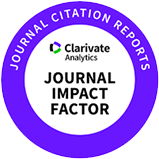Exploring synergistic effect of bacteriophages with probiotics against multidrug resistant Salmonella Typhimurium in a simulated chicken gastrointestinal system using metagenomic- and culturomic approaches
Abstract
The present study explored the synergistic potential of combining bacteriophages and probiotics as a dual approach for <italic>Salmonella</italic> suppression and gut microbiota modulation. Using a multiomics approach integrating culture and metagenomics, we isolated <italic>Lactobacillus</italic> <italic>reuteri</italic> J2M1, a robust probiotic strain with strong acid and bile tolerance, intestinal adhesion, and safety profiles. Concurrently, two bacteriophages, SLAM_phiST45 and SLAM_phiST56, targeting <italic>Salmonella</italic> Typhimurium were selected based on their broad host range, enhanced inhibitory effects as a cocktail, and genomic safety validated through whole-genome sequencing. In a model that simulated the gut environment of poultry, the combined application of bacteriophages and <italic>L. reuteri</italic> J2M1 resulted in significant changes in the microbial community at the genus level. Although the application of bacteriophages alone effectively reduced <italic>Salmonella</italic> populations, it also led to the proliferation of genera containing potential pathogens, such as <italic>Clostridium perfringens</italic>. In contrast, the co-application of <italic>L. reuteri</italic> J2M1 mitigated these negative effects by promoting the growth of beneficial genera, including <italic>Oscillibacter</italic> and <italic>Clostridium butyricum</italic>, which are associated with anti-inflammatory properties and gut health. These findings demonstrate that combining bacteriophages with probiotics suppresses pathogens as well as contributes to the establishment of a balanced gut microbial community. This study highlights the utility of a multiomics approach for probiotic discovery, the efficacy of bacteriophage cocktails in pathogen suppression, and the benefits of their synergistic application with probiotics. Although <italic>in vivo</italic> validation is required, these in vitro results provide a robust foundation for the development of sustainable and effective alternatives to antibiotics for poultry production.
















